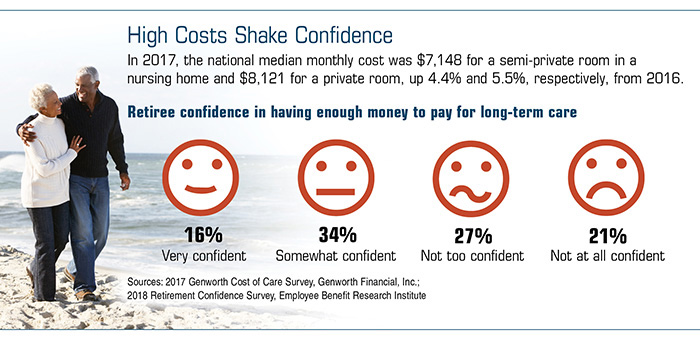The smart Trick of Pacific Prime That Nobody is Discussing
The smart Trick of Pacific Prime That Nobody is Discussing
Blog Article
Pacific Prime - An Overview
Table of ContentsThe 8-Minute Rule for Pacific PrimePacific Prime - QuestionsThe Ultimate Guide To Pacific PrimeOur Pacific Prime DiariesOur Pacific Prime PDFs

This is due to the fact that the data were collected for a period of solid financial performance. Of the estimated 42 million individuals that were without insurance, just about concerning 420,000 (about 1 percent) were under 65 years of age, the age at which most Americans end up being eligible for Medicare; 32 million were adults between ages 18 and 65, around 19 percent of all grownups in this age group; and 10 million were children under 18 years old, regarding 13.9 percent of all children (Mills, 2000).
These price quotes of the number of individuals uninsured are created from the annual March Supplement to the Present Populace Study (CPS), performed by the Demographics Bureau. Unless otherwise noted, national quotes of individuals without health insurance coverage and percentages of the populace with various kinds of insurance coverage are based on the CPS, one of the most widely used source of quotes of insurance coverage and uninsurance rates.
Pacific Prime for Beginners

Still, the CPS is particularly helpful since it produces yearly price quotes fairly swiftly, reporting the previous year's insurance coverage approximates each September, and due to the fact that it is the basis for a regular set of estimates for greater than two decades, permitting for evaluation of patterns in protection over time. For these factors, along with the extensive use of the CPS in various other research studies of insurance coverage that exist in this report, we depend on CPS estimates, with restrictions kept in mind.

The price quote of the number of without insurance people increases when a population's insurance standing is tracked for several years. Over a three-year duration beginning early in 1993, 72 million people, 29 percent of the U.S. https://www.mixcloud.com/pacificpr1me/. population, were without coverage for a minimum of one month. Within a solitary year (1994 ), 53 million individuals experienced at the very least a month without protection (Bennefield, 1998a)
6 out of every 10 uninsured adults are themselves used. Working does boost the possibility that navigate to this website one and one's household participants will have insurance, it is not a guarantee. Also participants of families with two full time wage earners have practically a one-in-ten chance of being uninsured (9.1 percent uninsured price) (Hoffman and Pohl, 2000).
The Best Strategy To Use For Pacific Prime
New immigrants account for a considerable percentage of people without medical insurance. One analysis has associated a considerable section of the recent growth in the size of the united state uninsured populace to immigrants that showed up in the nation between 1994 and 1998 (Camarota and Edwards, 2000). Current immigrants (those that pertained to the United States within the previous four years) do have a high rate of being without insurance (46 percent), but they and their kids account for simply 6 percent of those without insurance policy across the country (Holahan et al., 2001).
The connection in between medical insurance and access to care is well established, as documented later on in this phase. The partnership in between health and wellness insurance coverage and health outcomes is neither straight neither basic, a substantial scientific and health and wellness services research literary works links wellness insurance policy protection to enhanced access to care, much better high quality, and enhanced individual and population health standing.
Degrees of analysis for examining the results of uninsurance. It concentrates especially on those without any wellness insurance policy for any kind of size of time.
Not known Facts About Pacific Prime
The issues dealt with by the underinsured are in some areas comparable to those encountered by the without insurance, although they are usually much less serious. expat insurance. Uninsurance and underinsurance, nevertheless, involve distinctly different plan issues, and the strategies for addressing them may differ. Throughout this research and the 5 records to comply with, the primary focus is on individuals without wellness insurance policy and thus no support in paying for healthcare beyond what is offered with charity and safety net establishments
Medical insurance is an effective variable affecting receipt of care because both people and medical professionals react to the out-of-pocket cost of solutions - https://www.ted.com/profiles/46568975. Medical insurance, nonetheless, is neither essential neither adequate to access to medical solutions. However, the independent and direct effect of health insurance policy protection on accessibility to health and wellness services is well developed.
Others will certainly obtain the healthcare they require even without health insurance policy, by paying for it expense or seeking it from suppliers who supply care free or at extremely subsidized prices. For still others, medical insurance alone does not make sure receipt of care due to the fact that of other nonfinancial obstacles, such as a lack of healthcare companies in their area, limited access to transport, illiteracy, or linguistic and social differences.
The 6-Minute Rule for Pacific Prime
Official study regarding uninsured populations in the United States dates to the late 1920s and early 1930s when the Committee on the Expense of Treatment produced a series of reports about financing doctor office sees and hospitalizations. This issue became salient as the varieties of medically indigent climbed up throughout the Great Depression.
Report this page